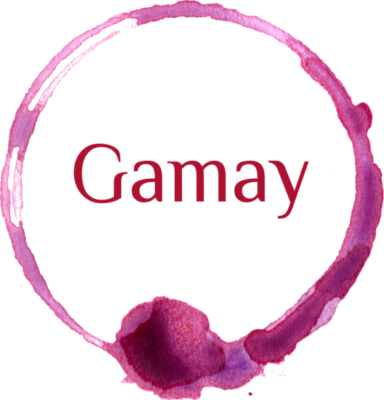Gamay is an ancient Burgundian red grape variety used as the primary grape in Beaujolais. Wines can be named after their varietal or the region in which the wine is grown and produced. In the case of Beaujolais, this is a wine-producing region north of Lyon, covering parts of Rhone in Burgundy, France. In the Loire Valley, it is used to make Rosé. Around 75% of the world’s Gamay is still grown in France, with much smaller plantings in cool climates like Switzerland, Canada, Turkey, New Zealand and Australia.
Gamay is often associated with a process called carbonic maceration. In this process, the juice ferments mainly within the berries, producing bright and fruit-forward wines. These methods can be used to make simple wines and add freshness as a component of more complex wines. The resulting wine is a light-bodied wine that shares characteristics of Pinot Noir as it shares origins in Burgundy. The light style leads to lower tannins and generally lower alcohol. These wines are typically meant to be drunk young to enjoy the fresh fruit flavours.
Sorrenberg, in Beechworth, Victoria, is one of Australia’s most famed Gamays, but the Yarra Valley, King Valley, Mornington Peninsula, Geelong, and Canberra all have single varietals worth sampling.
Aromas
Gamay delivers a fresh, fruity flavour profile with subtle earthy and floral nuances. Its primary flavours are red cherry, raspberry, and strawberry, with secondary notes of banana, bubblegum (from carbonic maceration), and violet. Tertiary Flavors (in aged wines) are earth, truffle and potting soil.
Flavours
Gamay is prized for its aromatic charm, which combines fruit, floral, and earthy elements. You will find fresh red berries like strawberry, cranberry, cherry, and floral notes of violet and peony are often prominent. Many wines have earthy undertones with hints of wet stone, forest floor, or subtle spice.
Tannins and Body
Low to medium tannins make Gamay soft and approachable. It is light to medium-bodied, with a silky texture and refreshing acidity.
Cool v Warm climate
Gamay’s style varies depending on the climate, with distinct differences in flavour and structure:
Cool-climate wines are full of crisp red fruits like cranberry and red currant, with bright acidity and more pronounced minerality or earthy notes. Higher acidity contributes to a lively and refreshing profile. Delicate and fine tannins add elegance to the wine. These wines are generally light, zippy, and often floral, focusing on freshness and subtle complexity. You will find these wines in Beaujolais (Beaujolais-Villages, Cru Beaujolais), parts of Canada, and cooler regions in the Loire Valley.
Warm-climate wines have riper red fruits like strawberry and cherry, with a touch of darker fruit like blackberry and reduced minerality. Softer acidity gives the wine a smoother and rounder mouthfeel. Warm climates tend to have slightly more pronounced tannins but are still soft and approachable. They are fuller-bodied, fruit-driven, and often with a hint of spice or richness. You will find these wines in Southern parts of Beaujolais, Australia, and warm areas in California.
Listed below are the wineries that produce Gamay.
Click here to find your perfect Gamay at a winery with many other searchable features.


